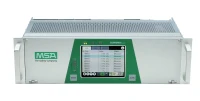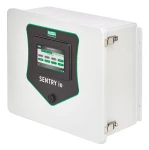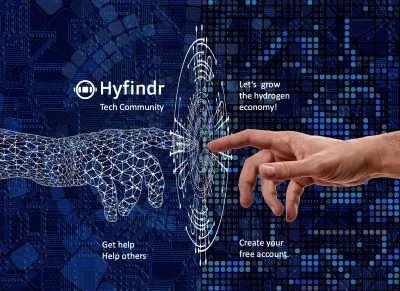Browse all fuel cell controllers from leading suppliers on our marketplace!
What is a fuel cell controller?
A fuel cell controller is the central management and control unit for a fuel cell system, which usually includes the hydrogen fuel cells themselves and the balance of plant setup around them. In some instances, the control of other peripheral systems such as the fuel storage system may also be handled by the fuel cell controller.
The fuel cell control system is a very important component of the system as it logically links the components with each other and also is the link between the user or operator and the system.
Operating fuel cell systems effectively can become quite complex since fuel cell stacks and various other system components exhibit non-linear and discontinuous behavior in several of their physical characteristics. To operate the system safely and optimally and to avoid damage to the stack or any other system components, very high demands are placed on the controller. As a result, the software and underlying operating systems of fuel cell system controllers differ from systems commonly found in the consumer industry since they have to exhibit high reliability, speed and robustness in operation at all times.
What subsystems are found in fuel cell controllers?
Typically software running on fuel cell controllers divides the system into subsystems and defines various states of operation. This enables easier management of the states defined by the control system layout. The choice of subsystems is highly dependent on the kind of fuel cell system in operation. The following are four common examples.
1. The reaction control subsystem
The reaction control subsystem focusses on controlling the variables around the reactants which are aimed to be introduced to each other at certain stoichiometric ratios, temperature levels and pressure levels. This is a critical balance to be held in order not to destroy the membrane, catalyst or any other element of the fuel cells themselves. In addition, inadequate supply of reactants to the cells (fuel starvation) leads to inefficient use of the cells and invariably reduces overall system performance and efficiency.
2. The thermal control subsystem
The thermal subsystem focusses on maintaining optimal thermal conditions for the reaction area and in other areas of the fuel cell system. A significant amount of heat is generated during the chemical reactions that occur at the cells and deviations from optimal values can lead to damage of the cell membrane, the catalyst, other elements of the cells or even other elements of the entire system. Generally the reaction occurs more rapidly at higher temperatures and as a result more heat is generated which in turn leads to an even faster reaction. Cooling measures therefore need to be dosed accordingly, anticipating this additional heat generation at higher temperatures.
3. The electrical control subsystem
The electrical subsystem aims at converting the varying current and voltage output of the fuel cells to levels required by the electric consumer for which the system is designed. In line with the polarization curve and as a result of ohmic losses, the voltage output of the fuel cell stack varies with the current drawn from the system. For this reason, electric converters, for instance buck converters (to lower the voltage), boost converters (to increase the voltage), filters, and stabilizers are introduced into the power electronics module of a fuel cell system. These are all controlled as part of the electrical subsystem.
4. The fuel cell storage subsystem
The fuel storage subsystem handles the tank and its peripheral elements. Depending on the storage method and concept the elements included in this subsystem vary. When hydrogen as a fuel is stored in gaseous form no conversion aside from a pressure regulation is required. However when other forms such as a dissolution in a storage substance or reformation from methanol is required the fuel cell storage subsystem increases in complexity. As a significant amount of energy is stored in the storage system primary focus is on safe and stable supply of fuel to the fuel cell system.
How to design fuel cell control systems?
As can be seen from the above, the fuel cell control system is a complex, yet technically very interesting field since the control of fuel cell power systems involves combining the dynamic control of various subsystems spanning the areas of chemical engineering, electrochemistry and electrical engineering. Specific algorithms need to be developed and these are then implemented as software on a suitable fuel cell controller device.
In order to specify suitable control algorithms for fuel cells, on the outset it is necessary to clearly understand and outline the nature of the control problem. In the next step a choice of the best control variables is made in order to ensure that the system will behave as required.
Based on the control variables the state of the machine, open/closed loop controls, and alarms are then defined.
List of certain manufacturers of fuel cell control units
These manufacturers offer fuel cell controller:
- Bosch
- Continental engineering services
- Denso
- Hyundai Kefico
- Keihin
- Schaeffler Engineering
- Siemens
- Texas Instruments
Books
Last update: 20.06.2022





